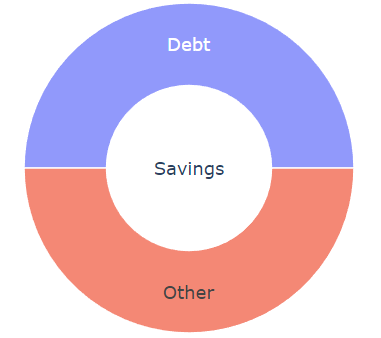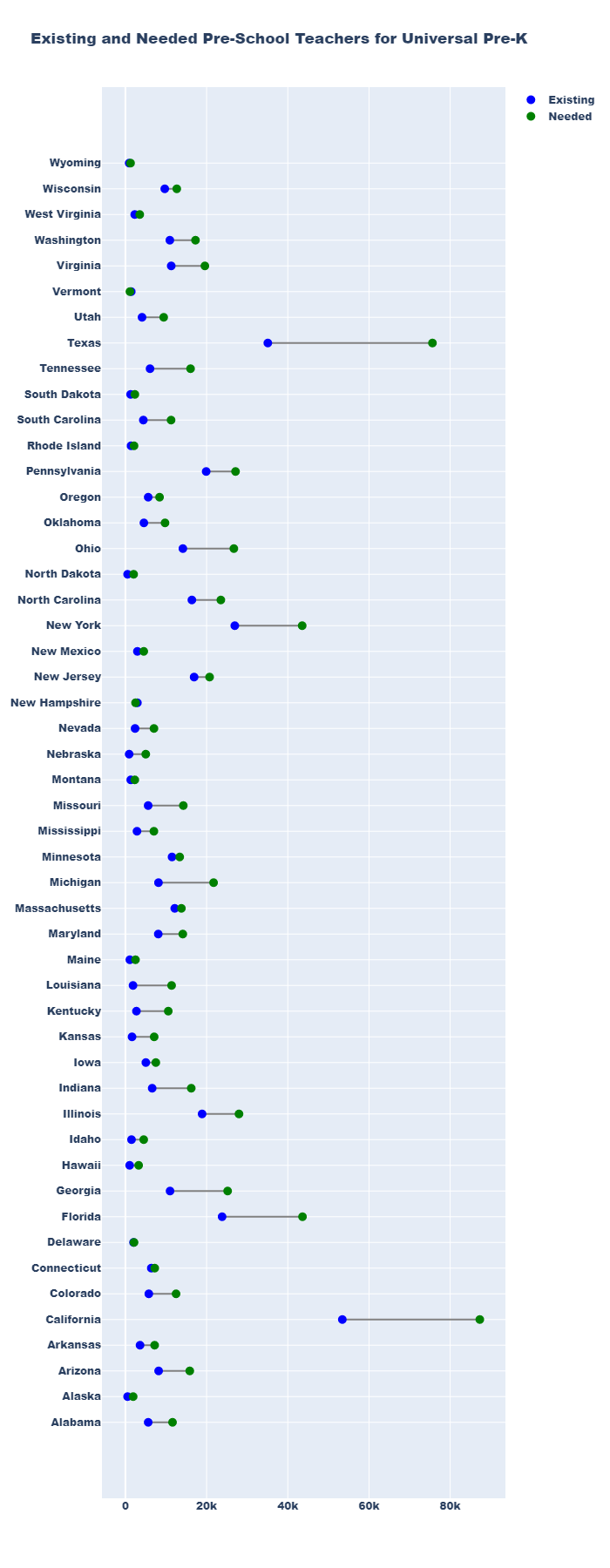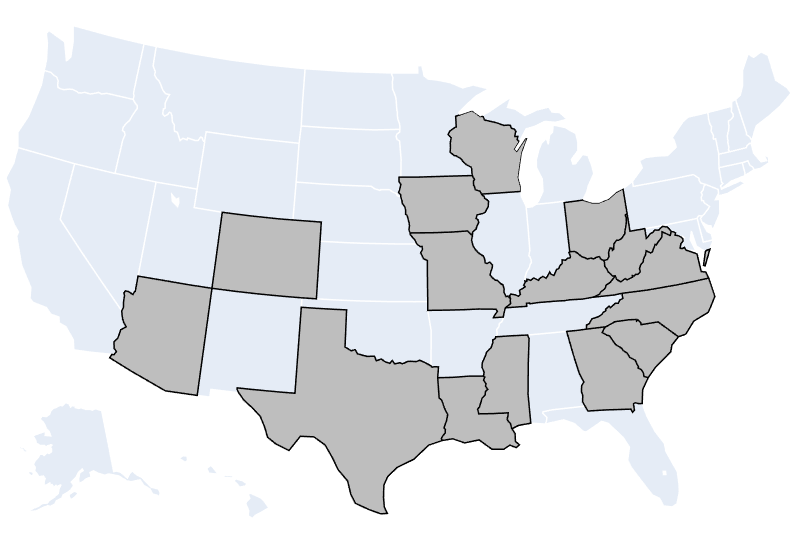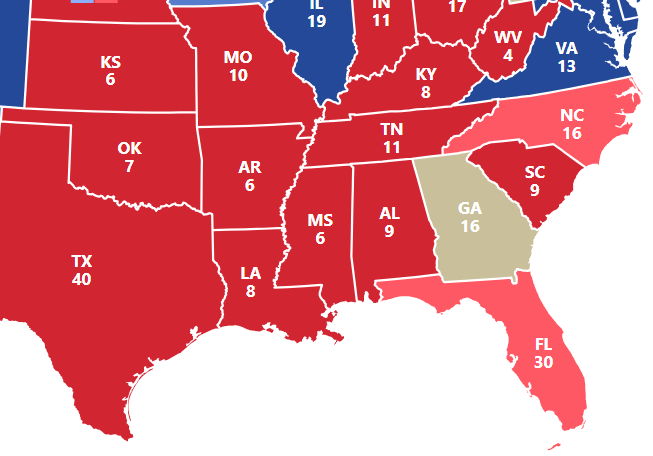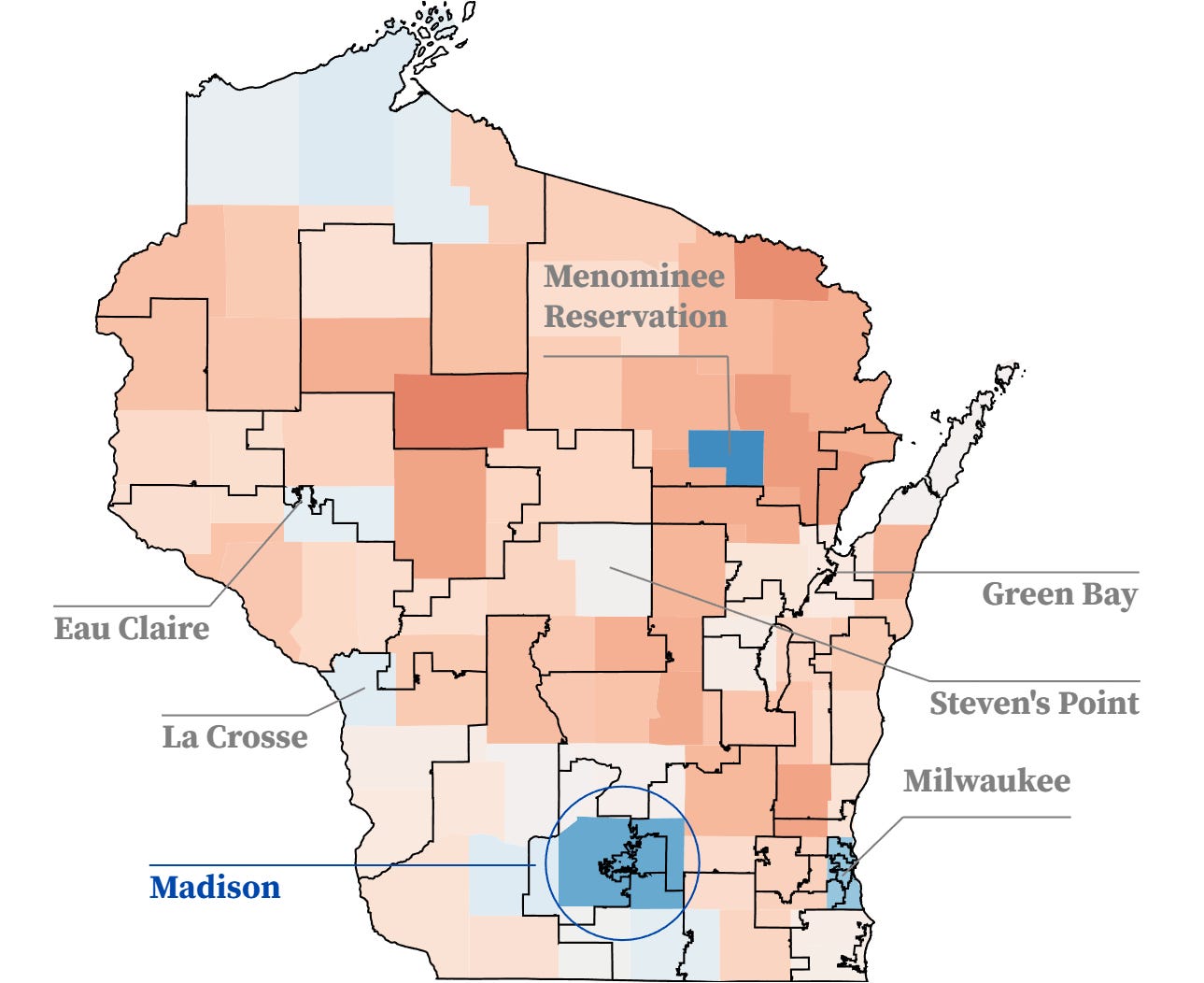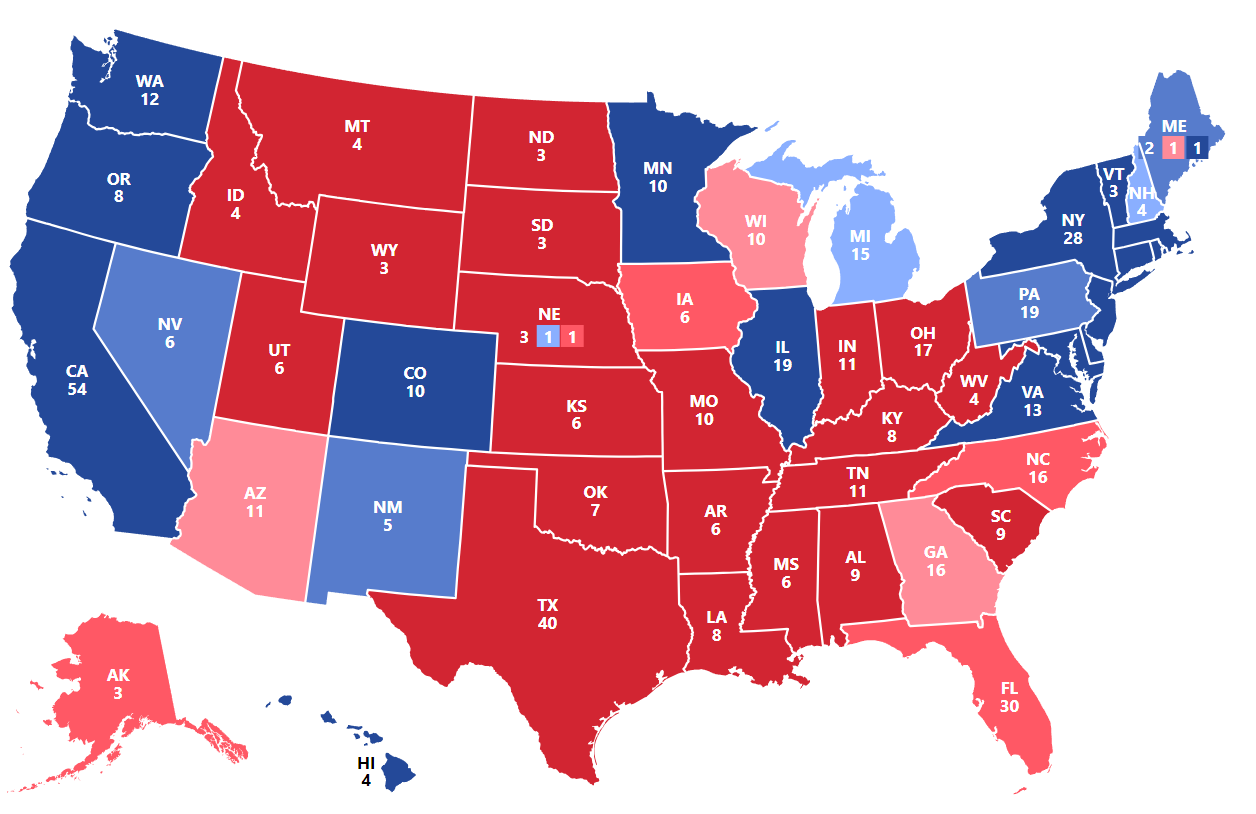What could Universal Early Childcare look like?
In Minnesota recently we had an excess surplus of $17.5 billion dollars in state funding. While the state budget for 2025-2027 was set with most of the surplus being allocated. It got me thinking what would happen if we used some of it to test a Universal Early Childcare Program?
To start off I'll explain why a Universal Early Childcare Program needs to exist.
A Universal Childcare program would significantly reduce the burden on families early on in their development. While a majority of households can afford to make payments on childcare. Only half of households in the State of Minnesota can afford to make a long term payment in childcare. While in only 10% of households is considered affordable.
While almost all states offer some form of subsidized childcare in a program often known as CCAP to households who often make up to 200% the Federal Poverty Limit. For the average household they are left to pay for these services on their own. The city of New York recently expanded their CCAP program to extends toward individuals who make less than 300% of the Federal Poverty Limit. Expanding the outreach of their program to 49% of families in New York. In Minnesota a similar program would help about 35.2% of families. While these programs are extremely helpful, they are often exclusionary of a large number of households that are in need of aid.
Often excluded and in need of help are college educated households. In recent years the number of individuals receiving college degrees has risen to about 35% with the percentage of people ages 25 and older being at 42%. For many of these households they often make around $100,000/yr. Having more than a single child can be the difference between a member of the household leaving and staying in the workforce. A Universal Childcare program would alleviate these strains for both businesses and families alike.
How much does Childcare cost?
For a new family the cost of childcare can deter households from having children and for those who have them they can put an overbearing strain on their finances. Often resulting in one of the household members, often women, to leave the workforce to provide care for their children. To show how much of a burden it can have on a typical family we’ll use an example.
To start off the median household of three in Minnesota made about $105,800 in 2021. This is around the average for a household size of 3. To help showcase a typical budget for a dual income household. We’ll be using a basic budgeting rule of 50/30/20 to illustrate how much of a financial burden having a child puts on the average households budget.
In the state of Minnesota we’ll assume that after taxes, insurance, and 401k payments on these households that leaves them with about $70,019. From there the average household will spent approximately 30% of the remaining income on housing about $1750 a month on rent. That leaves them with 20% to cover for Basic Needs such as Food, Utilities, Transportation, and Other Needs not including Childcare. That leaves $1167/mo for these services.
Knowing the average household of three spends approximately $655/mo on Food. And an average of $367/mo in Utilities. We’re already nearing the 20% estimate. We’ll set aside a small amount for transportation of about $300/mo for 2 used cars and $188/mo for car insurance. With that we’ve spent about 56% of our budget on needs not including other necessities such as, clothing, hygiene, etc. We’ll assume that the average household will cut out portions of their housing spending in favor of purchasing these necessities.
Moving on to Savings. For most households they need to spend an average of $580/mo on student debt repayments. Meaning 50% of the amount planned for savings will go towards debt repayments. Leaving the remaining 10% which may go towards various things like saving for a house mortgage, car repairs, health care, emergencies, and maybe a vacation. We do not include investing as the average household cannot afford to invest. These for the most part cannot be cut in order to make payments on Childcare but often do in order to afford various needs of the household.
Now that leaves us with Wants. Where the cost of Childcare will have to take it's cut. These are basic things like gym memberships to entertainment and eating out. For most adults especially dual income, these are often essentials. From buying lunch with your coworkers to restaurant meals and social events many of these things are things that the average person cannot cut or will not due to convenience.
For a single child from Ages 0-4 the cost of daycare alone can be an upwards of $19,500 a year for infant care. This includes the average cost of daycare to clothing and food. From there Toddlers and Preschool an average of $15,600/yr. While an average contribution of $17,000 per year is expected every year after that. From the first year onward, it will take 92.3% of the budget for their disposable income. That means severe cutbacks on things like eating out or ordering food to cancelling trips and plans. Leaving the average household with about $125/mo in disposable income.
Why does it matter?
For the majority of families a childcare program based on the Federal Poverty Limit will not help them. Even if the ratio was expanded to 400% it still would force significant percentage women out of the workforce while often forcing them to work part time jobs to help makes ends meet.
In the state of Minnesota about 30% of working families are single income households with a median income of $60,000. A Universal Childcare Program would over time reduce the amount of women who choose to leave the workforce. It would also reduce the burden on businesses allowing them to retain skilled workers. and also increase the number of women in leadership positions overtime. This would attract businesses and households that are looking to start families without giving up on their careers.
Assuming if at least half of single income households became dual income the median income would significantly rise increasing local GDP and an increase in the number of households making more than $100,000. This could be great with states with tax brackets like Minnesota allowing them to increase revenue to help pay for Universal Childcare and other services. We could expect a gradual shift in all income levels.
How much would Universal Childcare cost?
The cost of childcare isn’t a uniform number. Costs can vary depending on age. For Infants the average annual cost is around $19,500/yr or $375/week. For Toddlers its around $16,952/yr or $325/week. and Preschoolers at $14,716/yr or $283/week. These numbers can be higher or lower depending on your location in a metro or rural area.
For a state run program however, the thing we need to be more concerned about are ratios. The minimum number of children to staff ratios for a safe working environment. While labor is often the most expensive part of a childcare program and the ratio varies state by state this is the metric we will be using for a safe work environment.
A Universal Childcare Program that starts from Age 0 to 4. Would require 35,839 Childcare Workers and 13,380 Preschool Teachers. In the entire state of Minnesota there’s currently a total of only 23,033 Childcare workers and 11,490 Preschool Teachers.
It’s to note that there would not be enough Childcare workers to provide enough services to the 334,501 children ages 0 to 4 in the state. In order to accommodate an increase in wages likely similar to Kindergarten teachers would be required. If we assume a wage of around $62,000 for both Preschool teachers and Childcare workers. It would cost $3 billion dollars per year. Or about 4.48% of the state budget in 2027. Passing a Universal Early Childcare bill could be a real possibility for Minnesota.
Would it actually work?
While easiest part of getting Universal Childcare to work is in the budget. In reality large parts of Minnesota are Childcare deserts and with a Universal approach it could significantly worsen as demand would take over supply. Even with an increased wage it would take time for it to operate functionally.
There would be difficulties in checking every daycare in order to ensure that they are up to standard and can result in lower quality care. While the increased salary would help soothe demand and deal with childcare deserts over the years, this will likely significantly worsen in the regions around the state as workers migrate to Minnesota for higher wages.
In order for a plan like this to be successful the program must be able to provide an adequate amount of childcare services to the population within a set time period, New York proposed a Universal program which would take 5 years to build up. In Minnesota, a similar program would see a need for the licensing of 12,806 Childcare workers and 1,890 Preschool Teachers in that time period.
That would mean licensing 2561 Childcare Workers and hiring 378 Teachers every year. Though it’s important to consider that a significant portion of Childcare Workers in Minnesota are under the age of 18 and assistants to home care providers.
Realistically, in order for this to work a large number of those workers will have to come from out of state. If even half come from neighboring states that could mean a severe degradation of childcare services for the entire region. An independent or localized state effort can greatly worsen child care services in the entire region. While programs like Universal Pre-K can work due to existing infrastructure and Universal Childcare could be achieved in Minnesota.
Furthermore, we would also need to consider additional educational requirements for childcare providers and better regulations to ensure quality care. Which would likely include the removal of teenage assistants from Family Child Care Homes.
A Universal Program in Minnesota could likely result in other neighboring states following suit such as Iowa and Illinois. Meaning a possible drain of child care worker of other states and not be an ideal solution. While several states have been passing Universal Pre-K and expanding coverage to households, Universal Childcare will likely require a federal intervention.
How many states can afford Universal Childcare?
While in recent years many states have moved towards adopting Universal Pre-K for the majority of states Universal Early Childcare is affordable even at elevated wages similar to Kindergarten Teachers. There are notable exceptions where it can be an increased burden on tax payers, however, Universal Childcare with adequate funding these issues can be addressed.
Both Democrats and Republicans agree on the need for Childcare but are unable to pass a bill on it. Which includes expanding on the existing Child Care Development Block Grant or CCDBG that is used by most states to offer affordable Childcare to households that make up to 85% of their state’s income.
For Democrats that means increasing the amount to up to 2.5 times the median state income about $237,000 nationwide, while for Republicans an increase of 1.5 times up to $105,000. Would receive some form of Childcare Assistance up to 7% of their Income.
With both bills greatly increasing the amount of spending a state can afford to do with their state level programs. Talks have stalled.
What could go wrong?
If a bill were to be passed states would have increased funding towards their Childcare Programs to allow them to expand and improve upon the base funding they are given. Depending on weither a Democrat or Republican bill or a mixture of the two is passed the outcome can vary greatly.
For this bill we assume unlike in our assumptions the amount allocated is based on an average median wage for a childcare worker is $31,200. Assuming that the budgetary allocation of Childcare does occur. Which in the Republican Bill there are no mentions of. That at least half of the Democratic plan of spending of $193 Billion over six years to states. And that at least two times the median state income is used with a national average of up to $140,000 nationally.
From here we could see states move towards implementing Universal Early Childcare programs which would have inadequate childcare support for large portions of their populations and insufficient funding from the federal level regardless of the original $386 Billion estimate was in place.
Funding would likely become inadequate as demand for childcare workers increases and workers demand a higher wage. States could compete for childcare workers as many will move to states offering more financial compensation. Many states will not be able to provide adequate care until training and retention are increased resulting in increased pay.

Meanwhile for Preschool Teachers demand often meets supply. While in others it is often still inadequate. The likelihood of a Universal Pre-K passing is not guaranteed. Shortcomings will come from the inadequate workforce for Childcare Workers. As wages rise we should expect Pre-School Teachers to also demand a higher wage for their skills.
Under the theoretical expansion families making less than 75% of a states income would be 100% covered, while those between 75 to 100% would pay little to none. For those that make 100 to 125% of their state’s median household income 2 to 4% copay. and for 150 to 200% they’ll pay 7% of their household income. This would make childcare almost universal. But for the vast majority of household, affordable.
Moving on, the Bureau of Labor Statistics estimates that about 47% of total Childcare workers are Self Employed and Private Households. From the Occupational Outlook Handbook we know that 27% of the total 949,000 Childcare Workers work in Daycares, while 21% are in Private Households and 26% are Self Employed. Since we know that there are approximately 170,000 Nannies in the US. There are a left over 3% of Workers that are employed to Private Households. So we can guess that 29% of Childcare Workers are employed in Group or Family Home Care. With a total of 778,180 Childcare Workers.
With a total of 778,180 Childcare Workers in Homes, Groups, and Daycares and a growth rate of about 0.6% annually. For the year of 2021 to meet the needs of 100% of children to have access to early childcare we would need an estimate of 1,996,706 Childcare workers about a bit over two and half times the current number existing of Childcare workers. For Preschool Teachers similarly 745,424 teachers are needed to 483,100 existing ones with a growth rate of 1.5%. Under current growth rates if nothing is changed it would take 109 years for 75% Coverage at 1,497,530 Children we would need 157 years to reach 100%. Similarly for Universal Pre-K we would need 30 years.
So what would we need to reach universal coverage? Over an eight year period, we should expect a need for an average annual growth rate of 12.48% for Childcare Workers and 5.57% for Pre-K Teachers. But this can differ drastically state by state.
With many issues of burnout and low wages. Staffing issues will likely worsen in many states. To deal with this we should expect an increased pay similar to wages of Kindergarten Teachers with it childcare subsidies to at least double. Furthermore, many states will also need to decrease staff to child ratios to reduce burnout rates.
Given the above many places could remain Childcare Deserts as old and newly trained workers migrate out due to pay and working conditions. Another problem that could arise is that as wages rise it could make Childcare Workers one of the highest paid positions in rural areas.
Within a span of five to eight years we could expect a few of the smaller states to achieve Universal Childcare but for many programs to come up with inadequate funding, resources, or workers. Moreover, what’s more likely that many Childcare Workers from these states will migrate out of state for higher wages offered in other states. Meaning that no state is able to achieve Universal Childcare in the given time period. A similar adoption of Universal Pre-K could see the same thing occur.
As many states are unable to compete with increased rates. Services in these regions could degrade. Many families with the means to leave will likely do so. Typically those from College Educated Households as the costs of childcare will increase to unaffordable levels for the few households that would normally be able to afford them.
What does that mean?
Without significant increases to federal spending under the Child Care Development Block Grant. State funded programs would stall as in many states the number of Childcare Workers could shrink. While other states could implement policies to attract more workers. In many Competitive States we could see possible differing arguments on dealing with inadequate funding.
Any effort to block expansion of funding on a federal level or a focus on alternative payment methods on a state one could have serious effects on the ability of a state to provide adequate care. While many states would have the majority of their population eligible for Childcare services for most it would still be out of reach. New Families in these states would likely move with a majority of households that are able to being college educated households.
Why would any State want to do this?
It may not make sense as to why anyone would intentionally delay or worsen childcare services in a region. But politically it can make a lot of sense. On average there are more left leaning and independent voters in college educated dual income households with an overwhelming preference for female voters to vote Democrat.
For many competitive states this could be a legitimate strategy to undermine democratic systems. As services degrade and childcare becomes unaffordable for the college educated household those who are looking to start a family and are able to leave will look to do so.
States could prioritize lower income households before spots for higher income households are allocated spots, making it impossible for these households to be provided with any form of childcare as costs rise.
A change would not happen immediately but would be a gradual noticeable shift away from these states into others with adequate coverage. Overtime it could potentially turn states towards political affiliations. As individuals for lower income households many would still be able to be provided with childcare services. It would only become an issue for dual income households.
To start off. In the South West we would expect Arizona go Red while Nevada turns blue. The states of California, Colorado, New Mexico, Nevada, and Oregon could pass Universal Childcare attracting college educated workers in Arizona and Utah to move to these states.
Meanwhile in the Mid West as costs exceed expectations, states such as Iowa and Wisconsin could turn red. In Iowa due to a small state budget the cost of Childcare could quickly become unaffordable. While in Wisconsin, State Republicans would likely find alternative means such as stipends and tax breaks instead of increasing payments for Childcare Providers resulting in workers leaving the state and inadequate childcare services, though it’s outcome is still uncertain.
In the Southern states we could expect to see states like North Carolina and Texas turn more conservative as delays, alternative payment schedules, and prioritized subsidies could deny Childcare to many households with states like Louisiana, South Carolina, and Mississippi having majority control of the State Senates would give them a definitive control of these states to Republicans.
At the center of it all are three states. Georgia, Pennsylvania, and Wisconsin. These states are often the ones that determine the outcome of electoral races. But in this scenario it could determine the future of policy making in the United States.
As it stands in the current setting 52 of the seats in Senate would belong to the Republican Party with the addition of Arizona. Giving them a small majority in the Senate. That still leaves the fate of the Presidency and the House.
So what could happen?
While historically, the states of Wisconsin, Pennsylvania, and Georgia have had a significant impact on the outcome of past elections. The party affiliation of the states have been mostly split with many voters in these states having no affiliation. You might wonder if a delay tactic could work to begin with.
Unfortunately, in all three states the State Senates are controlled by small but considerable Republican majorities. With the House of Representatives of Georgia and Wisconsin also being held by Republicans as well as an even split in Pennsylvania. This could mean that any bill dealing with Childcare in these states would be heavily influenced by Republicans. Delay tactics and alternative payment methods would prove to be effective in all three states.
So is there a way of stopping these states from holding Childcare hostage?
Let’s start in Georgia where Republicans hold control of both the House of Representatives and State Senate. In order for a delay tactic or alternative payment method to be successful Republicans only need control of one of the houses. In our scenario we will be looking at the State Senate.
Above are the most recent district lines for State Senate. You can see in many districts they lean heavily Republican while others near the middle are mixed with a slight lean Democrat. It might be safe to say that we could see a few districts possible shift blue. Though, it wouldn’t be unrealistic for a significant shift in many districts a possible shift could occur. With three or maybe four districts in the Atlanta Metro with maybe one near Savannah and another near Augusta totaling six possible districts.
With that in mind for many rural households while childcare is an important issue it’s only one of many and may not be enough to turn many counties. It’s to note that coverage in these areas would likely be adequate with funding though there will likely be some shortages. With this we can exclude the district around Savannah and Augusta.
A prioritization of lower income households first means childcare for certain households and denial for others. Along with this for many voters in particular, raising a family is often not a concern of theirs having grown out of that phase. With many of these more rural districts the average age tending to be far older.
Accounting for a significant shift of four districts from the Atlanta metro there would still end up being a majority in the Senate for Republicans. Overall, we should expect Georgia overtime to turn red as college educated residents ages 18-34 migrate out of state for better opportunities.
Moving on to Pennsylvania from the State Senate map we can see that while in large parts of the state it’s overwhelmingly red. In the metro areas it’s a lot more split. In both Pittsburgh and Philadelphia metro we could expect to see large shifts in House and Senate.
Inadequate childcare could be a driving policy in the metro for changing state districts. With the possibility of up to six districts flipping. While only one state is needed by either State Democrats and Republicans to gain the majority in both the House and Senate. It could be possible to see a constant shift in policy based on who at the time is in charge.
It wouldn’t be surprising to see Pennsylvania Democrats to take control of both the house and senate to set bills and policies such as Universal Childcare. Though, the road to achieving it may come with many roadblocks. Realistically speaking in this scenario there would be nothing stopping House and State Republicans from proposing amendments or repealing previous bills and policies. Changes could be held up or delayed for years. But for this scenario, we will assume that does not occur.
So now we have a split. With Wisconsin left to decide the future of the country and how much policies will shift one way or another. Wisconsin is arguable one of the worst states for an issue like this. Being considered one of the most widely gerrymandered states in the US.
As we can see in most State Senate Districts it leans mostly red. While there are some outliers like Menominee a Native American Reservation. It’s not really a coincidence that the districts lean this way. With a significant portion of the population residing in the one of the various metros or cities. Many of the metros have been gerrymandered to favor republican seats.
From districts surrounding Madison to the metro of the Green Bay large portions of each of the cities metros have been cut out and extended to draw favorable lines for State Republicans. With the most apparent around Green Bay where it is split between three districts. In the current atmosphere it’s unlikely that a state senate in Wisconsin could flip in the current state senate.
We could expect for Wisconsin like Georgia to turn red gradually as people leave the metros in favor of neighboring states turning Wisconsin red. As it stands currently even without this in Milwaukee large numbers of households are already leaving which could prove to worsen the existing situation.
Is that it?
Unfortunately, attempting to pass a Universal Early Childcare bill would likely result in a scenario similar to this. It’s to note that the Republican bid for the same exact bill had no additional funding provided. Not to mention that in many Republican majority controlled states have implemented abortion and book bans. Delay and divert tactics would provide a clear line for State and House Republicans to win local districts, elections, and influence every level of government.
While Universal Early Childcare may be out of reach for now, it doesn’t mean we should give up on providing affordable childcare. We can still help a lot of households by extending coverage of childcare services for a small, but significant portion of families. As it stands in many states, Single Mothers and Fathers are often unable to afford childcare services under current household income limits. It would give these women and men the ability to change their lives. Along with lower income dual income households that are often struggling to make ends meet.
The goal of having families no longer be forced into make a choice will remain just that, a goal. Unless we’re willing to put ourselves in a situation that could fundamentally destroy our democracy. But there is always another way.
For many of these places development has come at an unequal rate. Decaying towns without adequate basic infrastructure and services. For most all they want is a place to belong in a community that treats them with respect and takes care of them.
In reality, it’s an isolating experience. Where the only thing in front of them most nights is a screen or a television. Hard work that repeats without much of anything else. For others unable to escape their lives, stuck on farms or other places where it is all they have ever known. And only a dream of anything else.
If nothing changes we may never have any form of Early Childcare for most households. I’d like to hope that it doesn’t go this way, that we don’t forget about the others in our society. But instead I’ll end with a warning of how everything can break. A Ceiling, A Wall, A Window. But rebuilding the frames so that everyone can look out just the same.






